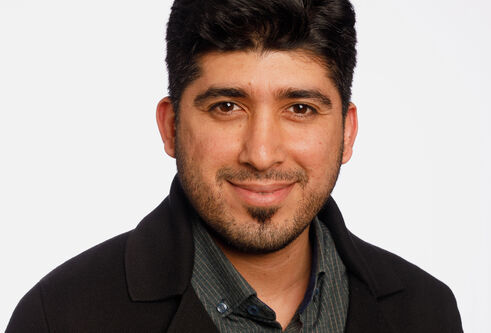PhD opportunity
A novel finite element approach to model mechanical failure of trabecular bone
Unfunded
30 September 2026
Understanding bone mechanics and accurately predicting bone strength, failure, and fracture is a critical area of research, particularly due to the high incidence of fractures in the elderly. The complex internal mesoscale structure of trabecular bone presents significant challenges for traditional continuum mechanics-based modeling. In this project, we propose an alternative approach by modeling trabecular bone as a network of trusses rather than a continuum structure. This method offers greater computational accuracy when properly implemented and, with suitable assumptions, can also be made computationally efficient. By leveraging this approach, we aim to improve the predictive capabilities of bone strength and fracture modeling, providing valuable insights for biomedical and orthopedic applications. This highly interdisciplinary research integrates image processing, biomedical engineering, finite element analysis, and mechanics of materials to develop a robust predictive framework. The findings of this study can address key challenges in bone mechanics, leading to a powerful clinical tool for preventing and treating premature bone failure caused by medical conditions such as osteoporosis.
Key objectives and potential impact
- Develop a Truss-Based Model for Trabecular Bone: Replace traditional continuum mechanics with a truss network model to better capture the complex mesoscale structure of trabecular bone.
- Develop a Truss-Based Model for Trabecular Bone to Enhance Computational Accuracy and Efficiency: Improve bone strength and fracture prediction while ensuring computational feasibility for large-scale simulations.
- Improve Clinical Tools for Osteoporosis Management: Develop a robust predictive framework that aids in diagnosing, preventing, and treating premature bone failure.
This project has the potential to revolutionize bone fracture prediction by providing a more accurate and computationally efficient model for assessing trabecular bone strength and failure. By improving diagnostic and predictive capabilities, it can significantly enhance patient outcomes, allowing for early intervention and personalized treatment plans, particularly for individuals at high risk of osteoporosis-related fractures. The integration of biomedical engineering, image processing, and finite element analysis advances both research and clinical applications, bridging the gap between engineering and medicine. Additionally, the development of a scalable and computationally efficient framework enables widespread adoption in healthcare and research, making bone strength assessments more accessible. Ultimately, this project contributes to better healthcare solutions, improved osteoporosis management, and advancements in computational biomechanics.
Requirements for candidates: Programming
Diversity statement
Our research community thrives on the diversity of students and staff which helps to make the University of Dundee a UK university of choice for postgraduate research. We welcome applications from all talented individuals and are committed to widening access to those who have the ability and potential to benefit from higher education.
How to apply
- Email Dr Sina Askarinejad to:
- send a copy of your CV
- discuss your potential application and any practicalities (e.g. suitable start date)
- After discussion with Dr Askarinejad, formal applications can be made via our direct application system.
